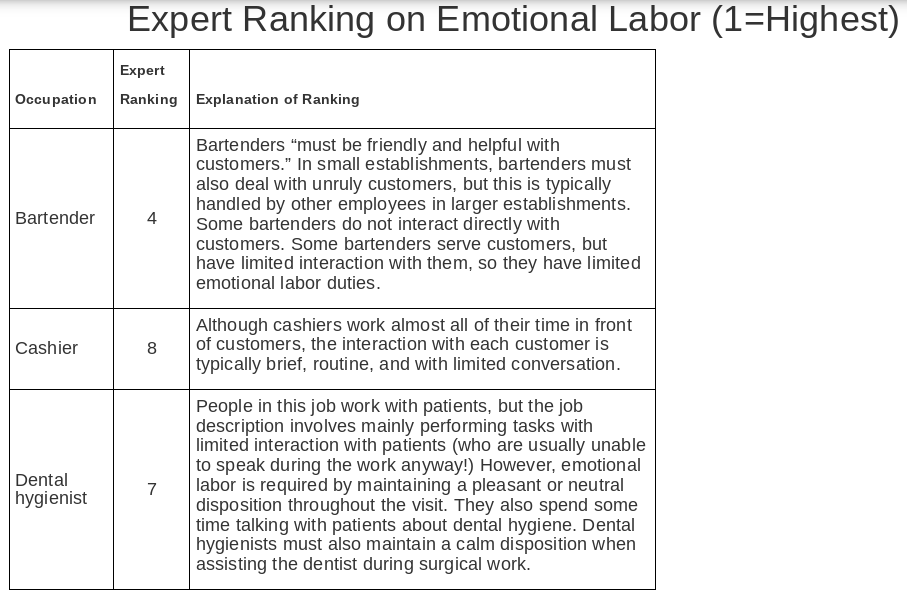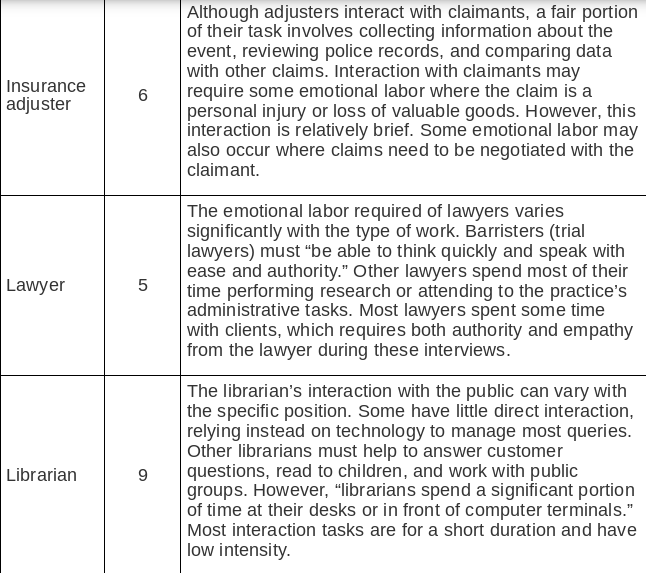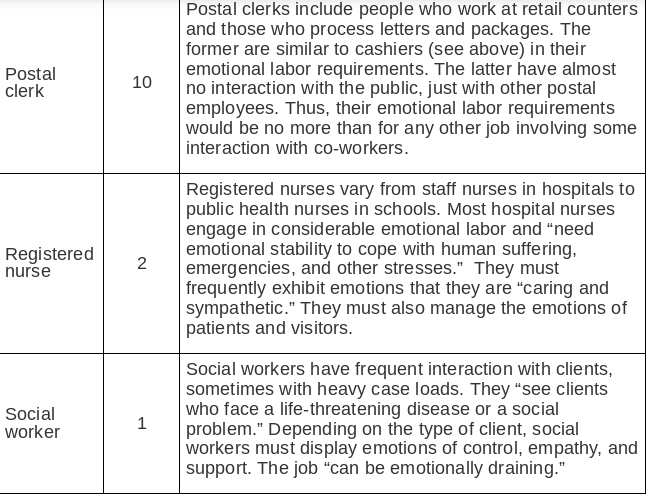Focus on the reasons for ranking of some jobs higher than others on the level of emotional labor. Describe the following in detail based on upon the chart and your personal experiences as it relates to emotional labor:
1. The extent to which the job has required display rules. Emotional labor is higher where the job requires the job incumbent to display emotions while interacting with customers, suppliers, and others.
2. The frequency and length of interaction with other people. Emotional labor is higher where employees must display emotions frequent and for long periods of time.
3. The intensity of emotions required during this interaction. Emotional labor is higher where the job incumbent must display more extreme emotions.
4. The extent to which the display rules create emotional dissonance. Emotional labor is higher where incumbents must display emotions that are dissimilar or contrary to their true emotions at the time of the emotional display.




Expert Ranking on Emotional Labor (1=Highest) Although adjusters interact with claimants, a fair portion of their task involves collecting information about the event, reviewing police records, and comparing data with other claims. Interaction with claimants may require some emotional labor where the claim is a personal injury or loss of valuable goods. However, this interaction is relatively brief. Some emotional labor may also occur where claims need to be negotiated with the claimant. The emotional labor required of lawyers varies significantly with the type of work. Barristers (trial lawyers) must "be able to think quickly and speak with ease and authority." Other lawyers spend most of their time performing research or attending to the practice's administrative tasks. Most lawyers spent some time with clients, which requires both authority and empathy from the lawyer during these interviews. The librarian's interaction with the public can vary with the specific position. Some have little direct interaction, relying instead on technology to manage most queries. Other librarians must help to answer customer questions, read to children, and work with public groups. However, "librarians spend a significant portion of time at their desks or in front of computer terminals." Most interaction tasks are for a short duration and have low intensity. Postal clerks include people who work at retail counters and those who process letters and packages. The former are similar to cashiers (see above) in their emotional labor requirements. The latter have almost no interaction with the public, just with other postal employees. Thus, their emotional labor requirements would be no more than for any other job involving some interaction with co-workers. Registered nurses vary from staff nurses in hospitals to public health nurses in schools. Most hospital nurses engage in considerable emotional labor and "need emotional stability to cope with human suffering, emergencies, and other stresses." They must frequently exhibit emotions that they are "caring and sympathetic." They must also manage the emotions of patients and visitors. Social workers have frequent interaction with clients, sometimes with heavy case loads. They "see clients who face a life-threatening disease or a social problem." Depending on the type of client, social workers must display emotions of control, empathy, and support. The job "can be emotionally draining." Television announcers must sound and look consistently pleasant on-air, and display similar emotions during the many public events required for the job. "The most successful announcers attract a large audience by combining a pleasing personality and voice with an appealing style." This can create emotional dissonance where the announcer works under tight deadlines or interviews people with aggressive behavior. However, announcers also spend a large portion of their time away from an audience preparing on-air scripts










